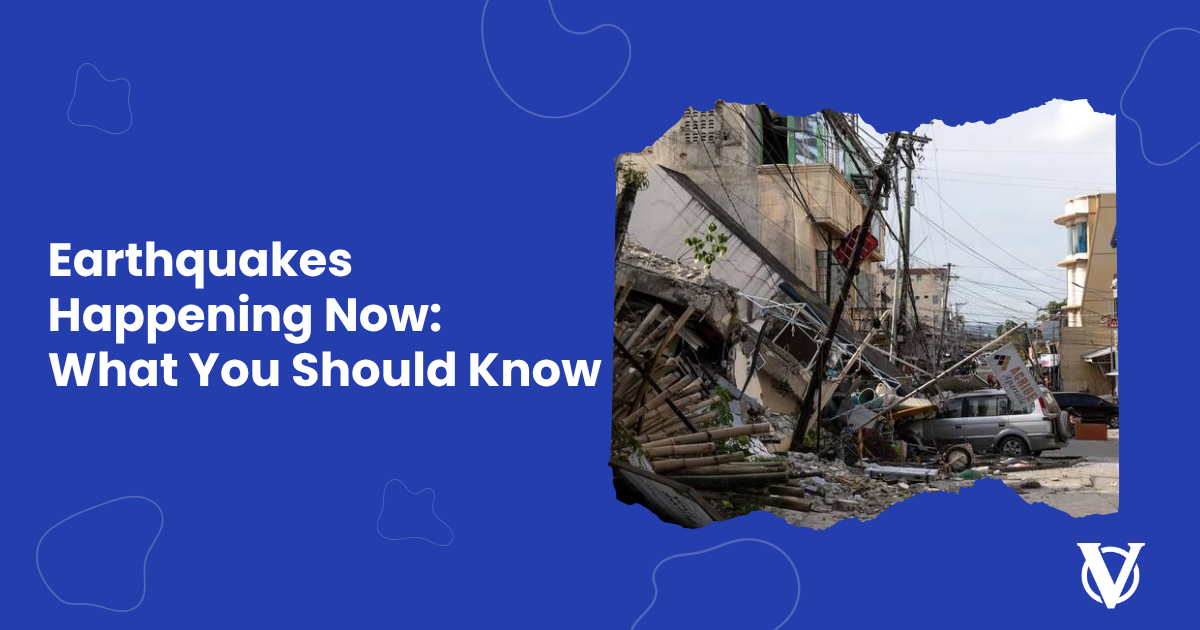Earthquakes Happening Now: What You Should Know
By Arvin
Posted on Oct 10, 2025

The Philippines, positioned along the Pacific "Ring of Fire," is no stranger to seismic activity — and recently, two major earthquakes have shaken the nation:
- On October 10, 2025, a magnitude 7.5 (or 7.4 by some reports) quake struck off the coast of Manay, Davao Oriental. A tsunami warning was issued for coastal areas.
- Just days earlier, on September 30, 2025, a magnitude 6.9 earthquake rattled Cebu and nearby provinces, causing widespread damage, casualties, and aftershocks.
These incidents underscore how seismic hazards remain very real and how vital it is to be prepared — whether you're in a coastal city, a rural province, or an urban area.
What to Do: Earthquake Safety Tips & Prevention
Being proactive can make all the difference when disaster strikes. Here are guidelines for before, during, and after an earthquake—especially useful if one occurs while you're traveling, at home, or at work.
Before an Earthquake
- Know the hazards in your area. Identify fault lines, landslide-prone zones, or structures with weak foundations.
- Prepare an emergency "Go Bag". Include water, non-perishable food, a flashlight and extra batteries, a first aid kit, a whistle, a face mask, important documents, and cash.
- Secure your home or workplace. Fasten heavy furniture, secure shelves, ensure that exit paths are clear, and check structural safety.
- Learn and practice drills. Know your evacuation routes and safe zones in buildings (under sturdy tables, away from windows), and conduct regular drills.
- Stay informed. Follow updates from PHIVOLCS, NDRRMC, and local disaster offices.
During an Earthquake
- Drop, Cover, and Hold On. Get down on your hands and knees, cover your head/neck under sturdy furniture, and hold on until the shaking stops.
- Stay away from windows, glass, and heavy objects. Avoid glass walls, suspended lighting, or anything that could fall.
- If inside a vehicle:
- Slow down and pull over to a safe area, away from buildings, trees, or overpasses if possible.
- Keep your seatbelt fastened.
- Don't exit or drive until the tremors have subsided and it's safe to move.
- If you're outdoors: Move away from buildings and other structures. Stay in the open until shaking stops.
After an Earthquake
- Check for injuries and hazards. Help the injured if you can, check for gas leaks or fires, and shut off utilities if necessary.
- Avoid entering damaged buildings. Even if they look intact, aftershocks can worsen structural failures.
- Follow official communications. Use your radio or phone (when available) to get updates from authorities.
- Document damage. Take photos or video of structural damage (home, vehicle) for insurance or relief agencies.
- Be ready for aftershocks. These can occur minutes, hours, or even days later.

Final Thoughts
Earthquakes in the Philippines are not “if” but “when.” With the recent magnitude 7+ event in Davao and the deadly quake in Cebu, many communities are still in recovery and rebuilding.
While we can’t control the earth’s tremors, we can control how prepared we are:
- Educate yourself on what to do before, during, and after a quake.
- Prepare your home, family, and emergency kit.
- Stay connected to official channels and follow instructions from disaster agencies.
- Practice calm action—panic causes more harm than shaking itself.


